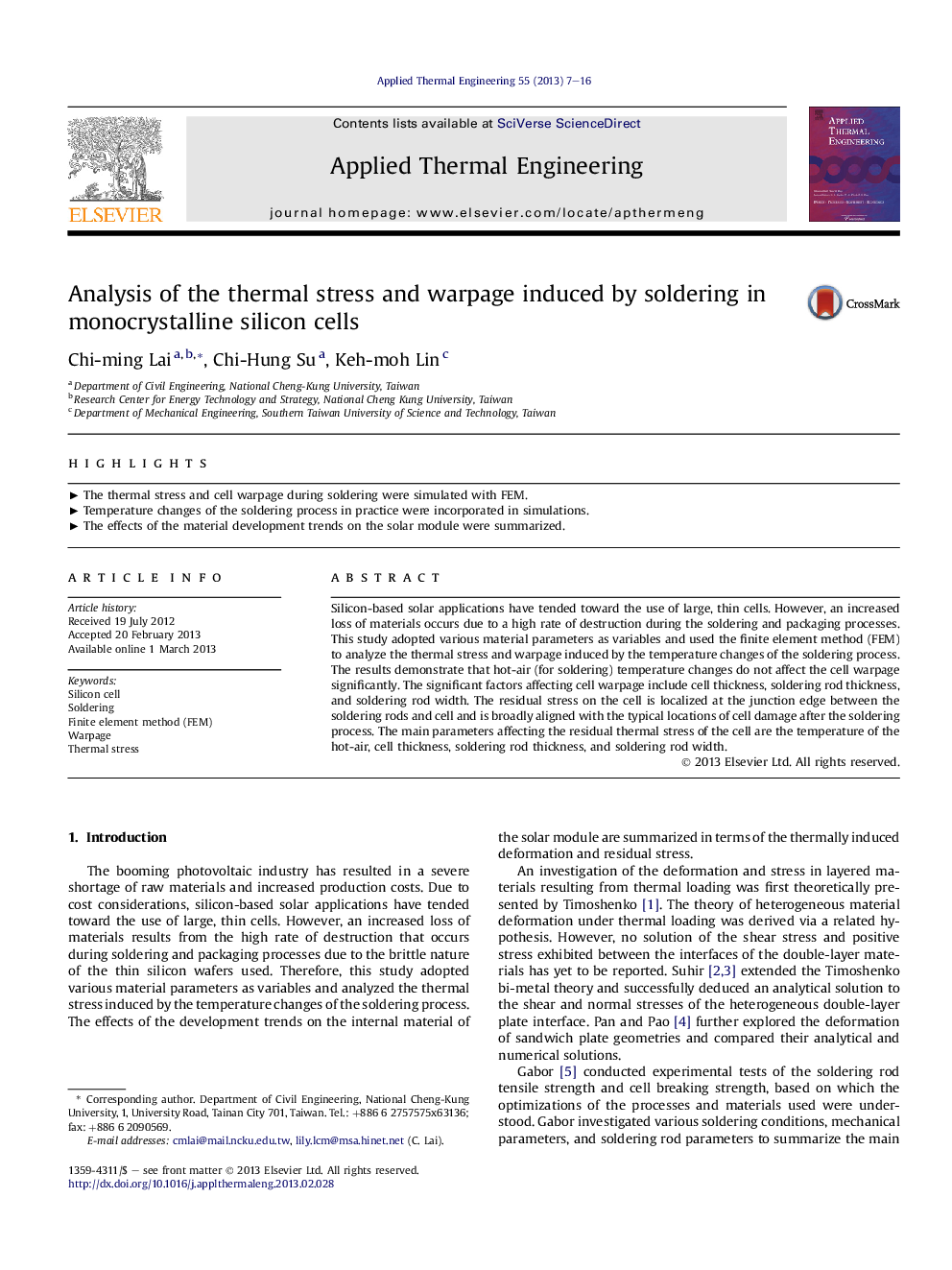| Article ID | Journal | Published Year | Pages | File Type |
|---|---|---|---|---|
| 646935 | Applied Thermal Engineering | 2013 | 10 Pages |
Silicon-based solar applications have tended toward the use of large, thin cells. However, an increased loss of materials occurs due to a high rate of destruction during the soldering and packaging processes. This study adopted various material parameters as variables and used the finite element method (FEM) to analyze the thermal stress and warpage induced by the temperature changes of the soldering process. The results demonstrate that hot-air (for soldering) temperature changes do not affect the cell warpage significantly. The significant factors affecting cell warpage include cell thickness, soldering rod thickness, and soldering rod width. The residual stress on the cell is localized at the junction edge between the soldering rods and cell and is broadly aligned with the typical locations of cell damage after the soldering process. The main parameters affecting the residual thermal stress of the cell are the temperature of the hot-air, cell thickness, soldering rod thickness, and soldering rod width.
► The thermal stress and cell warpage during soldering were simulated with FEM. ► Temperature changes of the soldering process in practice were incorporated in simulations. ► The effects of the material development trends on the solar module were summarized.
